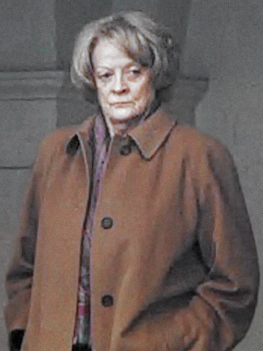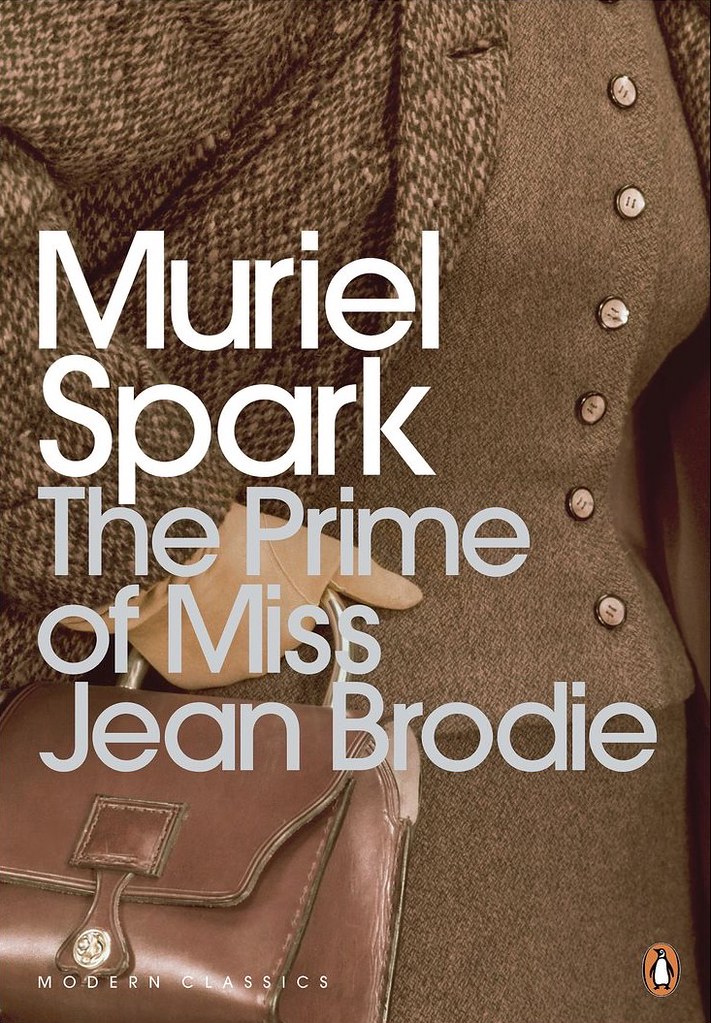
Dame Maggie Smith, a towering figure in British acting whose career spanned more than six decades, passed away in September at the age of 89 in a London hospital. Known for her unparalleled corrosive wit, unimpeachable gravitas, and a remarkable range of expression, Smith captivated audiences across generations, leaving an indelible mark on both stage and screen.
Her passing, though met with immense sadness from fans and loved ones, also brought forth a wave of tributes celebrating an extraordinary life devoted to the craft of acting. Throughout her illustrious career, Dame Maggie became synonymous with formidable characters, whether commanding the grand stages of the National Theatre or delivering masterly put-downs from the screens of global blockbusters and beloved television dramas. Her legacy is not merely one of awards and accolades, but of an enduring artistic presence that enriched the cultural landscape.
This in-depth look explores the foundational moments and pivotal performances that defined the early chapters of Dame Maggie Smith’s remarkable journey, tracing her ascent from an aspiring young talent to an internationally recognized, Oscar-winning actress. We delve into the roles that showcased her versatility and established her as one of Britain’s preeminent performers, setting the stage for a career that would continually defy expectations and charm millions.

1. **Early Life and Theatrical Roots**Margaret Natalie Smith was born in Ilford, Es, on December 28, 1934, into a family where her father was a pathologist. With the shadow of war looming, her family relocated to Oxford in 1939, where the young Maggie attended the Oxford School for Girls. It was in this environment that her journey into the performing arts began, not in a starring role, but with an apprenticeship in local theatre.
She commenced her theatrical career at the Oxford Repertory as a prompt girl and understudy. In a reflection on these formative years, she once humorously claimed that she never actually got onto the stage during her time there, as no one in the company ever fell ill. This early immersion in the mechanics of theatre, however, undoubtedly provided a grounding in the discipline and rhythm of stagecraft that would serve her throughout her extensive career.
Her burgeoning talent soon attracted attention, leading to a significant break when her company transferred to a small theatre in London in 1955. It was there that she was noticed by American producer Leonard Stillman, who cast her in “New Faces,” a revue that made its debut on Broadway in June 1956. This marked her first major step onto an international stage, distinguishing her amidst a cast largely composed of unknowns and hinting at the star power she was soon to command.
Read more about: Beyond the Headlines: An In-Depth Look at Madonna’s Iconic Journey Through Music, Film, and Cultural Evolution

2. **Establishing Herself on Stage and Screen**Upon her return to London from her Broadway success, Dame Maggie Smith’s career trajectory continued its upward climb. She was offered a six-month engagement in the revue “Share My Lettuce,” where she performed opposite the notable Kenneth Williams. This period further solidified her reputation as a versatile and engaging stage performer capable of holding her own alongside established comedic talents.
Her foray into film began with an uncredited role in the 1956 production “Child in the House.” Just two years later, in 1958, her performance in the melodrama “Nowhere to Go” garnered her a BAFTA nomination for best newcomer, signaling her potential for impactful screen presence. These early film appearances, though perhaps not immediately iconic, demonstrated her ability to translate her theatrical skills to the cinematic medium.
By the mid-1960s, Maggie Smith was firmly established as a prominent stage actress. Her compelling performance in the hit London production of “Mary Mary” in 1963 was particularly noteworthy, with The Times newspaper describing her as “the salvation of this fluffy Broadway comedy.” This critical acclaim underscored her capacity to elevate material and command attention, a quality that would become a hallmark of her work.
Read more about: Beyond the Red Carpet: Dissecting the Iconic Cars Celebrities Drive and the PR Machine Behind Their Public Persona
3. **Screen Presence and “Grand Larceny”**Dame Maggie Smith’s unique ability to dominate a scene, even alongside seasoned actors, became apparent early in her film career. A notable instance of this occurred in the film “The VIPs,” where she appeared in a pivotal scene with the formidable Welsh star, Richard Burton. Her performance nearly overshadowed his, drawing significant critical notice for its magnetic quality.
One critic, observing her powerful screen presence, remarked that “when Maggie Smith is on the screen, the picture moves.” This observation captured the essence of her captivating acting style, suggesting that her mere appearance could inject dynamism and momentum into a narrative. It was a testament to her inherent ability to command the viewer’s attention and imbue her characters with a palpable energy.
Richard Burton himself, perhaps in a mixture of admiration and playful exasperation, afterwards teasingly described her upstaging of him as “grand larceny.” This anecdote, often recounted, highlights not only Smith’s scene-stealing prowess but also the mutual respect and recognition of her extraordinary talent among her peers, even in the face of being outshone.

4. **Collaboration with Laurence Olivier**A significant milestone in Dame Maggie Smith’s theatrical career came in 1963, when she received an invitation from one of the most revered figures in British theatre, Laurence Olivier. Olivier, recognizing her burgeoning talent and powerful stage presence, offered her the prestigious part of Desdemona, to act opposite his Othello, at the newly formed National Theatre. This role placed her at the heart of the British theatrical establishment and alongside a living legend.
Her performance as Desdemona was met with critical acclaim and further cemented her reputation as a serious classical actress. The production, with its original cast including Smith and Olivier, was subsequently adapted into a film two years later. This cinematic rendition allowed a wider audience to witness their powerful stage chemistry and individual brilliance.
For her compelling portrayal in the film adaptation of “Othello,” Maggie Smith received an Academy Award nomination. This early Oscar nod underscored her capability to seamlessly transition between stage and screen, bringing depth and nuance to classical roles and proving her mettle on an international cinematic platform. It marked a crucial moment in her career, signaling her arrival as a formidable presence in both mediums.
Read more about: From Small Screen Starts to Silver Screen Superstars: 10 Actors Who Mastered the Art of the Career Pivot

5. **International Acclaim: “The Prime of Miss Jean Brodie”**The role that would propel Dame Maggie Smith to international fame and secure her place as a cinematic icon arrived in 1969 with “The Prime of Miss Jean Brodie.” In this film, she portrayed the determinedly non-conformist Edinburgh schoolteacher, a character that allowed her to showcase a complex blend of wit, defiance, and a certain formidable charm that would later become her signature.
Her performance as Jean Brodie was a masterclass in acting, bringing to life a character who defied conventions and inspired (and manipulated) her students with equal measure. The role was perfectly tailored to Smith’s unique talents, allowing her to articulate sharp dialogue and convey layers of intellectual and emotional depth, capturing the essence of a woman both captivating and problematic.
This iconic portrayal earned her the Academy Award for Best Actress, a signal honor that solidified her status as a leading lady on the world stage. In addition to the Oscar, she also received the British Academy Film Award (BAFTA) for her performance, completing a double triumph that cemented “The Prime of Miss Jean Brodie” as one of the defining roles of her early film career and a testament to her unparalleled dramatic ability.

6. **Continued Stage and Screen Versatility**Following her Oscar win for “The Prime of Miss Jean Brodie,” Dame Maggie Smith continued to demonstrate her profound commitment to both stage and screen. She remained an integral part of the National Theatre for another two years, engaging in performances that further showcased her versatility and enduring appeal as a theatrical force. Among these was her acclaimed performance as Mrs. Sullen in the Restoration comedy “The Beaux’ Stratagem,” which she brought to audiences in Los Angeles.
Her cinematic career also continued to flourish. In 1972, she received yet another Academy Award nomination for Best Actress for her portrayal of Aunt Augusta in the George Cukor film, “Travels With My Aunt.” This nomination underscored her ability to choose diverse and challenging roles, moving effortlessly from a commanding schoolteacher to an eccentric and adventurous aunt, each time bringing a distinct personality to the screen.
This period highlighted her dedication to a wide array of acting challenges, ensuring that her career was not defined by a single type of role or genre. Whether it was the intricate demands of classical theatre or the broader canvas of international cinema, Smith approached each character with meticulous care and a distinctive flair, earning her continued critical praise and further cementing her reputation as an actress of immense range and gravitas.
Read more about: Eddie Murphy’s Unwavering Stance: Why the Comedy Icon Will Never Perform His Own Stunts Again

7. **Expanding Horizons and New Beginnings**The mid-1970s brought significant personal changes for Dame Maggie Smith, including her divorce from co-star Robert Stephens in 1975. A year later, she embarked on a new chapter, marrying the playwright Beverley Cross. This period also saw her relocate to Canada, where she spent four years immersed in a repertory company. This decision to explore new artistic environments and embrace different forms of theatrical work was characteristic of her adventurous spirit and dedication to her craft.
During her time in Canada, Smith took on a series of weightier and more demanding roles, including Lady Macbeth in Shakespeare’s “Macbeth” and Queen Margaret in “Richard III.” These classical performances allowed her to delve into complex psychological landscapes, further demonstrating her capacity for intense dramatic interpretation. A critic, writing of her performance as Lady Macbeth, noted that she had “merged her own vivid personality with that of her charismatic subject,” highlighting her unique ability to inhabit and transform iconic characters.
Despite her continuous success and the numerous accolades she had already gathered, Dame Maggie remained remarkably modest about her achievements. She once stated simply, “One went to school, one wanted to act, one started to act, and one’s still acting.” This understated remark encapsulated her lifelong, unassuming devotion to her profession, suggesting that for her, acting was not just a career, but an intrinsic part of her being, a continuous journey rather than a destination defined by fame or awards.
Read more about: Beyond the Rhymes: Unpacking the Multifaceted Career and Enduring Impact of Common

8. **Notable Film Performances of the Late 1970s and 1980s**Following her enriching four-year period with a repertory company in Canada, Dame Maggie Smith seamlessly transitioned back to a prolific film career, demonstrating her unparalleled ability to inhabit diverse roles across various genres. Her return to the big screen in the late 1970s saw her co-starring with Peter Ustinov in the 1978 film, “Death on the Nile,” showcasing her flair for intricate characterizations within ensemble casts.
In the same year, Smith delivered another critically acclaimed performance as Diana Barrie in Neil Simon’s “California Suite.” Her portrayal in this comedy-drama garnered her an Academy Award for Best Supporting Actress, adding a second Oscar to her impressive collection. This win further solidified her reputation as an actress capable of delivering captivating performances that resonated deeply with both critics and audiences, regardless of the role’s size.
The 1980s continued to bring a string of memorable cinematic performances and numerous accolades. She received British Academy Film Awards (BAFTAs) for her roles in “A Private Function” and “A Room With a View.” The latter, a beloved period drama, also earned her a Golden Globe and an additional Academy Award nomination, cementing her status as a consistently lauded figure in international cinema.
Her work during this period highlighted her sustained artistic vigor and her remarkable capacity to bring depth, wit, and gravity to every character she portrayed. These roles not only expanded her filmography but also reinforced her enduring appeal and her ability to captivate new generations of filmgoers.
Read more about: Beyond the Headlines: An In-Depth Look at Madonna’s Iconic Journey Through Music, Film, and Cultural Evolution

9. **Return to Stage and Health Challenges of the Late 1980s**Amidst her cinematic successes, Dame Maggie Smith continued to dedicate herself to the stage, delivering powerful and acclaimed performances that earned her further recognition. Her interpretation of the ageing alcoholic in “The Lonely Passion of Judith Hearne” earned her another BAFTA, showcasing her profound capacity for dramatic roles that delved into complex human vulnerabilities. Following this, she received another BAFTA for her role in “Bed Among The Lentils,” part of Alan Bennett’s renowned “Talking Heads” series for the BBC.
In 1987, Smith returned to the London stage in “Lettice and Lovage” at the Globe Theatre, a role specifically crafted for her by Peter Shaffer. The production later transferred to New York, where it achieved immense success. Her run in this highly anticipated play, however, was dramatically interrupted by unforeseen health issues, including a bicycle accident and the need for eye surgery.
Further complicating this period, she was diagnosed with Graves’ disease in 1988, a condition that causes hyperthyroidism and a range of debilitating symptoms, including irritability, fatigue, tremors, skin discoloration, and changes in eye shape. Reflecting on the impact of Graves’ disease, she later admitted to the New York Times that she experienced “protrusion of the eyeballs” and felt she “looked absolutely frightening,” a testament to the personal toll her health challenges took.
Despite these significant personal and health battles, Dame Maggie’s resilience shone through. After a 12-month hiatus, she courageously resumed her performances in “Lettice and Lovage” in New York. Her unwavering dedication and powerful return to the stage were celebrated with a Tony Award, an extraordinary achievement that underscored her indomitable spirit and her profound commitment to her craft in the face of adversity.
Read more about: Eddie Murphy’s Unwavering Stance: Why the Comedy Icon Will Never Perform His Own Stunts Again
10. **Early 1990s Film Roles and DBE Honor**The early 1990s marked a period of both personal honor and continued professional diversification for Dame Maggie Smith, as she embraced new roles and received significant national recognition. In 1990, her outstanding contributions to the performing arts were formally acknowledged when she was created a Dame Commander of the British Empire, an honor equivalent to a knighthood. This prestigious accolade further underscored her status as one of Britain’s most cherished and respected actors.
Her film career continued to flourish with a series of notable appearances that demonstrated her versatility across various genres and scales of production. In 1991, she lent her distinctive talent to Steven Spielberg’s reimagining of a classic tale, appearing as the aging Wendy in “Hook,” the sequel to Peter Pan. This role allowed her to contribute to a major Hollywood production, bringing her seasoned grace to a beloved story.
Smith also took on roles in films that appealed to a wide audience, showcasing her ability to blend seamlessly into different cinematic landscapes. She starred alongside Whoopi Goldberg in the popular comedy “Sister Act,” demonstrating her comedic timing and adaptability. Additionally, her performance in “The Secret Garden” garnered her another BAFTA nomination, further highlighting her consistent ability to deliver critically recognized work in diverse film projects during this active phase of her career.
Read more about: Remembering the Icons: Notable Celebrities and Public Figures We Lost in 2025

11. **The Harry Potter Phenomenon and Minerva McGonagall**The dawn of the new century ushered in a remarkable resurgence of Dame Maggie Smith’s popularity, introducing her formidable talents to an entirely new global audience. Her decade began with critical acclaim for her portrayal of Betsey Trotwood in a BBC adaptation of “David Copperfield,” a role that earned her both a BAFTA and an Emmy nomination. This performance underscored her enduring command of dramatic roles, even as she prepared for a seismic shift in her career.
Just a year later, in 2001, Dame Maggie embarked on what would become one of her most iconic and globally recognized roles: Professor Minerva McGonagall in “Harry Potter and the Philosopher’s Stone.” This marked her entry into the beloved wizarding world, a franchise that would captivate millions worldwide. It is widely reported that she was the sole performer specifically requested by author J.K. Rowling to embody the stern yet deeply protective Head of Gryffindor.
Her portrayal of Professor McGonagall was masterfully executed, imbued with the distinctive blend of sharp wit, unimpeachable gravitas, and underlying warmth that had become her hallmark. Many observers noted that she brought a subtle “touch of Miss Jean Brodie” to Hogwarts, a nod to an earlier, equally formidable character. This nuanced performance allowed her to connect with a vast, younger demographic, bringing her extraordinary talent to a new generation of film fans who might not have been familiar with her extensive previous work.
Smith would go on to reprise this role in all of the subsequent “Harry Potter” movies, becoming an integral and beloved fixture of the magical saga. Her presence ensured that the films retained a sense of classic British acting pedigree, while her character’s stern demeanor, frequently punctuated by moments of profound care and dry humor, resonated deeply with audiences across the globe, solidifying her place in cinematic history for decades to come.
Read more about: Maggie Smith, Peerless Scene-Stealer and Iconic Actor, Dies at 89: Remembering a Storied Career

12. **Breast Cancer Diagnosis and Filming Harry Potter**Despite the global adoration and continued professional triumphs, Dame Maggie Smith faced significant personal health challenges during the peak of her “Harry Potter” tenure. In 2007, while actively filming “Harry Potter and the Half-Blood Prince,” she received a devastating diagnosis of breast cancer. This news brought an immense personal struggle into her intensely private life, demanding immense courage and resilience.
Following her diagnosis, Smith immediately began treatment, which included chemotherapy, a grueling process that profoundly affected her physical well-being. She openly shared the impact of this treatment, stating, “I had been feeling a little rum. I didn’t think it was anything serious because years ago I felt a lump and it was benign. I assumed this would be too.” She experienced severe side effects, noting she felt “horribly sick” and was left “flattened” by the arduous therapy.
A visible manifestation of her treatment was hair loss, which she bravely navigated while continuing her professional commitments. She revealed that she wore a wig during her filming of “Harry Potter,” humorously describing herself as “hairless… like a boiled egg.” This candid admission highlighted her dedication to her craft, refusing to let her personal battle impede her performance or the production schedule.
In a testament to her extraordinary resilience and professionalism, Dame Maggie expressed her determination to “stagger through” the remaining two films of the “Harry Potter” franchise, despite the physical and emotional toll of her illness. Her ability to continue delivering compelling performances under such immense pressure not only inspired her colleagues but also cemented her legacy as an artist of unwavering commitment and fortitude.
Read more about: Maggie Smith, Peerless Scene-Stealer and Iconic Actor, Dies at 89: Remembering a Storied Career

13. **The Dowager Countess of Grantham: Downton Abbey**Before enchanting audiences as the Dowager Countess, Dame Maggie Smith once again showcased her formidable talent in Robert Altman’s acclaimed 2001 film, “Gosford Park.” In this intricate English country house murder mystery, she played the cash-strapped Countess of Trentham, a character whose veneer of snobbery frequently gave way to masterly, often withering, put-downs. This performance, brimming with her characteristic wit and a touch of aristocratic disdain, proved to be a prelude to one of her most beloved roles.
Indeed, she arguably reprised the essence of this character in all but name when she was cast as the Dowager Countess of Grantham in the ITV drama “Downton Abbey.” From 2010 to 2015, Smith’s portrayal of Violet Crawley, the matriarch of the Crawley family, became a cultural phenomenon. Her delivery of sharp, often sarcastic, one-liners made the character an instant favorite, defining the series for many viewers. Her quip, “It’s true I don’t tolerate fools, but then they don’t tolerate me, so I am spiky,” perfectly encapsulated the persona that resonated so deeply with audiences.
Her ability to convincingly portray “spiky elderly ladies” was, as she herself conceded, a strength. Her performances as Violet Crawley were not merely comedic; they were infused with a profound sense of history, loyalty, and an underlying wisdom that anchored the emotional landscape of the series. The Dowager Countess became a symbol of a bygone era, navigating a changing world with unyielding wit and an iron will.
Off-screen, her “Downton” co-stars remembered her as being “whip-smart” and “incredibly funny,” engaging in word games like Bananagrams, at which she excelled. Actors like Michelle Dockery and Hugh Bonneville recounted her love for professional tennis, a shared passion that fostered a unique bond. Despite her formidable on-screen presence, Julian Fellowes, the creator of “Downton Abbey,” noted her deep kindness, particularly towards the younger cast members, whom she nurtured and supported, establishing herself as the respected leader of the company.
Read more about: Kylie Jenner: Unpacking Her Empire, Influence, & Style Evolution That Totally Suits Her

15. **Legacy and Private Life**Throughout her six-decade career, Dame Maggie Smith remained remarkably modest about her extraordinary achievements. She once famously summarized her lifelong devotion to acting with understated simplicity: “One went to school, one wanted to act, one started to act, and one’s still acting.” This sentiment captured her deep, intrinsic connection to her craft, viewing it not as a path to fame but as a continuous, essential part of her existence.
Throughout her six-decade career, Dame Maggie Smith remained remarkably modest about her extraordinary achievements. She once famously summarized her lifelong devotion to acting with understated simplicity: “One went to school, one wanted to act, one started to act, and one’s still acting.” This sentiment captured her deep, intrinsic connection to her craft, viewing it not as a path to fame but as a continuous, essential part of her existence.
Smith often reflected on the unique nature of theatrical performance, noting, “I like the ephemeral thing about theatre, every performance is like a ghost – it’s there and then it’s gone.” She was also known to be intensely private, shying away from discussing her acting process, with Simon Callow recalling how she would “kind of withdrew” if complimented or asked to talk about her work, as if speaking about it would cause it to “disappear.”
Despite a formidable reputation for being “difficult” or “spiky,” particularly with those she perceived as “idiots,” her colleagues and directors attested to her intellectual sharpness and unwavering commitment to excellence. Director Peter Hall observed that she was “not remotely difficult unless she’s among idiots,” while Richard Eyre praised her as “intellectually the smartest actress I’ve ever worked with.” Her impatience was often a manifestation of her high standards.
Her private life, despite intense public interest, remained largely out of the spotlight. She was a devoted mother to her two sons, Christopher Larkin and Toby Stephens, from her first marriage to Robert Stephens, and a loving grandmother to five grandchildren. After her divorce from Stephens in 1975, she found enduring companionship with playwright Beverley Cross, whom she married in 1976 and remained with until his death in 1998.
Read more about: Beyond the Spotlight: Unveiling the Hidden Scars and Resilient Spirit of Tina Turner’s Tumultuous Journey
Dame Maggie Smith’s passing in September at 89, surrounded by her family, left a profound void in the entertainment world. Yet, her legacy endures through a vast body of work that spans the grandeur of classical theater to the global reach of modern blockbusters and television. Her unparalleled wit, unimpeachable gravitas, and an extraordinary range of expression ensure that she will be remembered as one of the preeminent actresses of her generation, whose artistic presence enriched the cultural landscape for over half a century, leaving an indelible mark on the hearts of millions and inspiring countless aspiring performers.





